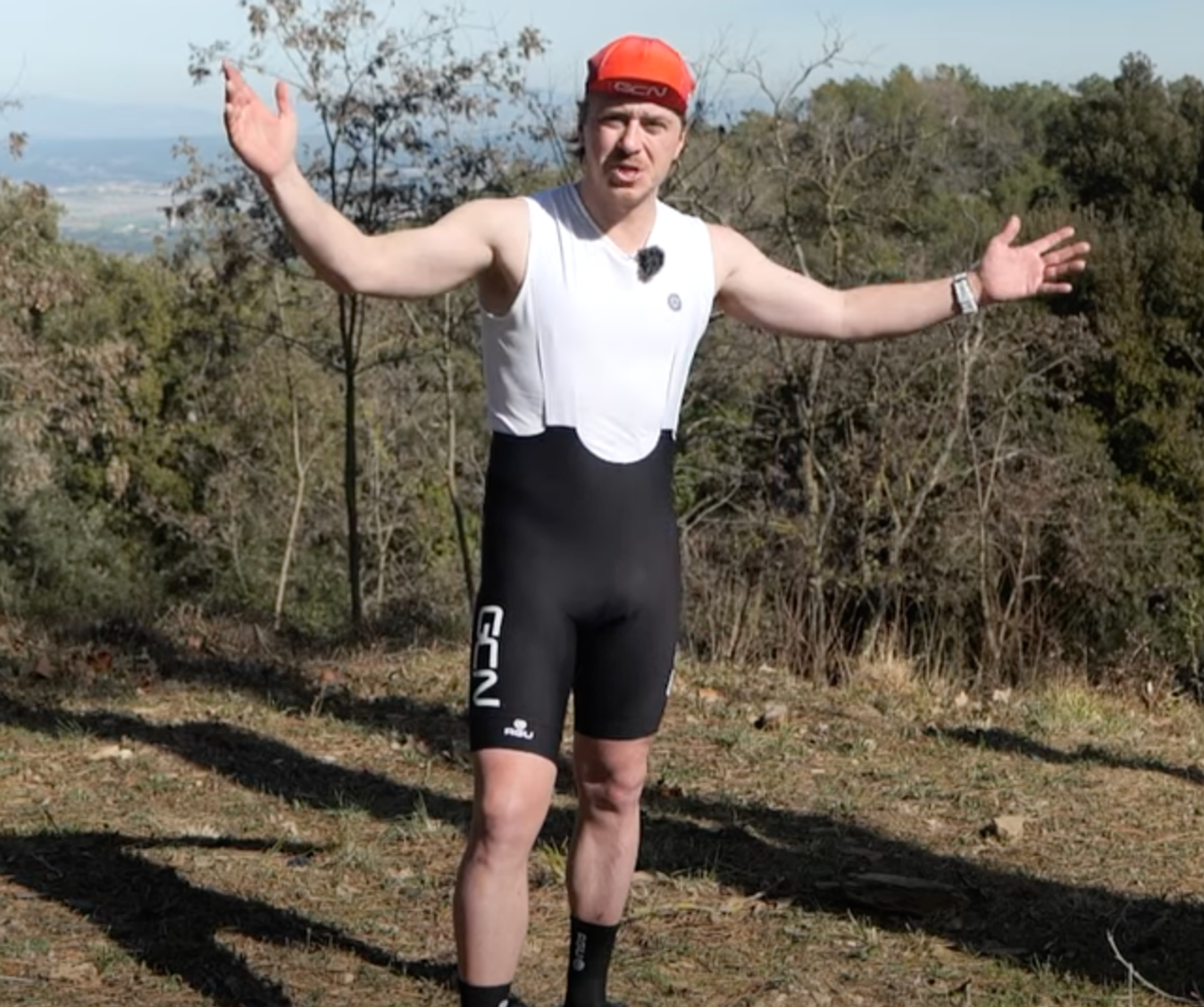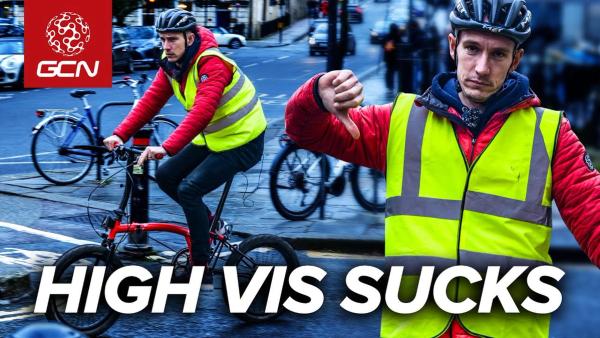What clothing should you wear when cycling?
The key items of cycling-specific clothing you should consider if you're looking for greater comfort and performance on the bike
Danny Walter
Head of Editorial Production
Before we even start here, we should point out that you don't actually need any cycling-specific clothing to ride a bike. Wearing anything you feel comfortable in is fine if it encourages you to get out and ride your bike.
However, there is a point that most cyclists get to where they want to feel more comfortable, wear less heavy, bulky clothing or just stop using clothing that means they heat up too fast or can’t cool down quickly enough.
That's when it’s time to invest in some cycling-specific clothing. There's also the element of wanting to look the part too, which is important to some people. You don't have to go crazy and try and get everything at once. Slowly build your wardrobe with different items depending on what's most important to you over time. Here are Hank’s must-have items to set you off on the right direction.
Read more: What gear do you need to start cycling?
Cycling-specific bib shorts
At the top of the list as the most important clothing upgrade are bib shorts. A lot of cyclists, including us, love them, mainly for the extra comfort they provide. When cycling, you spend a lot of time in the saddle and this is often the area that can feel most uncomfortable on a ride. A pair of bib shorts helps negate this. The dedicated chamois positioned in the seat of the shorts offers extra padding, helping to protect your sit bones and distribute pressure away from your sensitive parts when on long rides in the saddle.

© GCN
Bib shorts are one of the first items of cycling clothing you should look to invest in for extra comfort
They should fit snugly to the skin, which helps with aerodynamics but also prevents folds and creases that can cause chafing. The shoulder straps on bib shorts help keep them in place without the need for waistbands that can cause restriction around the waist.
The more you spend on a decent pair of shorts the better quality materials you’ll get which essentially means better padding, more considered construction for better aerodynamics and seamless construction to avoid any irritation or pressure points.
Read more: Why you should invest in cycling bib shorts
Base layer
There are multiple reasons to wear a base layer. Of course, it'll keep you warm, but they're not just for the depths of winter. While wearing one will certainly provide an extra layer of insulation when the weather’s colder, it can also help keep you cool, by wicking away sweat from the skin. Wicking is the process of moving water droplets from sweat away from your skin to the outside of the layer, keeping you dry and cool, rather than warm and damp.
Cycling-specific jersey
Cycling jerseys come in many different guises. Long sleeve, short sleeve, thermal – there are plenty of options out there. The main benefits of a cycling-specific jersey over any other type of t-shirt or top is the quality of the material. Technical fabrics allow for moisture to be wicked away from the body to the outside of any clothing. It should also offer a closer, more comfortable fit so there shouldn’t be any excess material flapping around. Often they're aerodynamically tested so you can get speed and performance gains if that’s something you’re looking for.
One of the most obvious benefits for cyclists are the three pockets you’ll find on the rear of the jersey. These are ideal for storing snacks, small tools or other light essential bits of kit and can be easily reached even while riding along.
Leg and arm warmers
These are a really useful accessory for frequent changes in temperatures. You may start a ride in cooler conditions so can pop either a pair of leg or arm warmers on (or both) and then remove them once you or the temperature has warmed up. They’re super easy to put on and take off as the temperature changes and can roll down really small to easily fit in one of those back pockets on your jersey.
Cycling-specific socks
While you might think there’s not much benefit to the type of socks you wear, they can play a significant part in your overall comfort. Cycling specific socks are made from more lightweight materials which not only help regulate feet temperature but also wick away moisture. This is really important for your feet. No-one wants, damp, cold and ultimately smelly socks while riding.
Cycling shoes
A good pair of cycling socks are likely to match well with a pair of cycling specific shoes. There are a variety of different styles available depending on where you are in your cycling journey and whether you have a preference for using flat pedals over clipless ones. You should look for a snug pair, with a stiff sole but above all find something you feel comfortable in. Many bike shops have shoes you're able to try out so you can get a better idea of how they fit your foot’s profile.
Bike helmet
While it isn’t a legal requirement to wear a helmet in countries other than Australia, New Zealand, Cyprus and Argentina, we’d always recommend wearing one for that extra bit of protection. Look for ones that meet minimum safety standards. This could be labelled with a European CE EN1078 standard sticker or if you live in the US your helmet should conform to the US Snell B90/B95 standard. Australians should look for the AS/NZS 2063:2008 certification. Make sure it's comfortable and fits snugly without being too tight or too loose.
Sunglasses or protective eyewear
This isn’t just a vanity thing (although that is quite high up on the list for Hank). For a lot of cyclists, the wind can really affect the eyes, causing them to stream, so wearing a decent pair of glasses will help protect them and keep your vision clear. There’s also all sorts of debris flying up as you cycle, not to mention bugs and insects, so glasses will shield your eyes from any unwanted visitors. Finally, sunglasses will help prevent glare from the sun helping you to see the road ahead and any other road users more clearly.
Extra accessories
Those are what we consider the essentials or first items to put on your kit list. However, if you’re looking to further expand your cycling wardrobe (and be careful because this can become addictive) here are a few other items to consider.
Gilet - a lightweight, packable bit of kit that can help keep your core warm and is easy to take on and off as you're riding and the temperature changes
Cycling gloves - these provide added padding to key areas of your hand and can help dampen the vibrations that you might experience from the road. They also offer an extra level of protection for your hands
Thermal jacket or waterproof - depending on where you live in the world these can be really important. In the UK for example, you won’t find many cyclists who venture out without a packable waterproof for those quick, unexpected showers. A thermal jacket, meanwhile, can help keep you warm on those colder days, where you might feel less motivated to get on your bike.
For more info and advice on cycling tips and skills check out our dedicated How To section on the GCN website.
.jpg?rect=957,780,3097,3060&w=600&auto=format)










